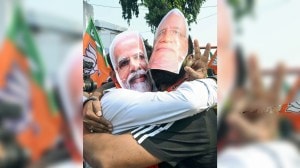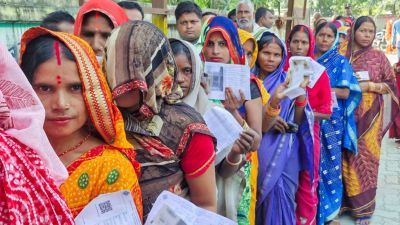
First and foremost, it is a completely new rocket. It is not a variant of any existing rockets. And, not only is it newly developed, it will also use many new technologies for the first time. So, in that sense we have to be extremely careful for the first launch of the vehicle.
Story continues below this ad
Otherwise, what we look for any launch – whether the satellite goes to the right orbit or not. The whole thing has been programmed in the system; we don’t really have to do anything once we give the command for lift-off, it will do everything itself.
What we do now is some testing on ground till the launch to ensure everything is all right. We do many rehearsal simulations at the computer level, check data from ground stations, and several other tests till the time of lift-off.
It will take around 800 seconds to inject the satellites.
What new technologies are being used in this launch vehicle?
There are methods by which solid propulsion stages are defined in ISRO, we have made some departures in this, which includes making the design such that it can be assembled very, very fast. The current arrangements are also such that it takes certain amount of time to a launch, these constraints were removed, which means there are certain defined risks for this. But we have done a very rigorous testing to prove this approach.
Story continues below this ad
These changes make for fast production, assembly, dis-assembly. It makes it convenient to assemble in both horizontal and vertical conditions, making it very flexible for operations. (The current PSLV and GSLV can be assembled only vertically.)
Second major change is that we roped in Indian industries for manufacturing this rocket that are not traditionally into rocket-manufacturing. That gives us – one, there are many more vendors; two, they are cost-effective as compared to the big players; three, it can be done with less compact machines making it easier to produce anywhere. There features were made part of the design.
The third important change is the electronics. Almost 90% of the electronics – computers, data sending, pyro, power system — that we use in this rocket are new design…have undergone rigorous testing. The importance of these new things is that we have gone for low-cost electronics, meaning all of them are not aerospace grade, rather commercial-grade electronics. The commercial electronics are available at much lower costs but it has a risk of failure, which we counter with steps like appropriate design, enough redundancies, etc.
We also have new algorithms and software that depends more on our NaVIC as compared to previous PSLV.
Story continues below this ad
Also, because we are going for commercial use, its size and volume becomes lesser because it is a more compact design. The production and procurement time becomes lesser.
So, what will be the turnaround time for the SSLV?
From procurement, making parts, and reaching the final level takes six month. But, the idea here is to manufacture the parts and keep them at someplace, and when needed just assemble and launch. It is a serial production system. It’s just like buying a car. The company doesn’t start to make it after you put in the order.
Our plan is to make it available in a week’s time – the assembly can be done in two days, two days of testing, and the next two days we are doing the rehearsal and launch. (It takes months of planning and manufacturing for the other Isro rockets.) We have already done that this time.
What happens after the launch?
Story continues below this ad
After the launch, we will do experiments on the upper stage on whether it can be re-started, whether it can go to another orbit, whether it can do some manoeuvres.
This rocket is mainly meant for commercial launch of small satellites. How will India’s reach in the global space market change once the vehicle becomes operational?
This will be based on certain projections that show a large number of small satellites will be launched. The projections are based on recent market evolutions where interest is in small satellites in low earth orbit. Correspondingly, there are also many small rockets that are coming up, including our start-ups that are making it in the 100-200 kg class.
There are another 60 companies in the world working on rockets of small class. Operations of at least two to three such rockets are in private hands.
Story continues below this ad
ISRO doesn’t want to operate SSLV as a commercial activity. Our plan is to demonstrate that yes we can bring out a smaller cost-effective satellite launch vehicle in India. We want then the industries to take it on…we are already in the process of doing it. The industry will exploit it commercially.
This commercial exploitation will also depend on many factors – first, whether the prediction of the satellite comes true – the indications today are yes that it will happen; second, how cost-effective the SSLV will be in comparison to others where technology changes are very fast; third, how fast you can produce and launch; fourth, good success rate and precision of the vehicle to make it popular in the market.









